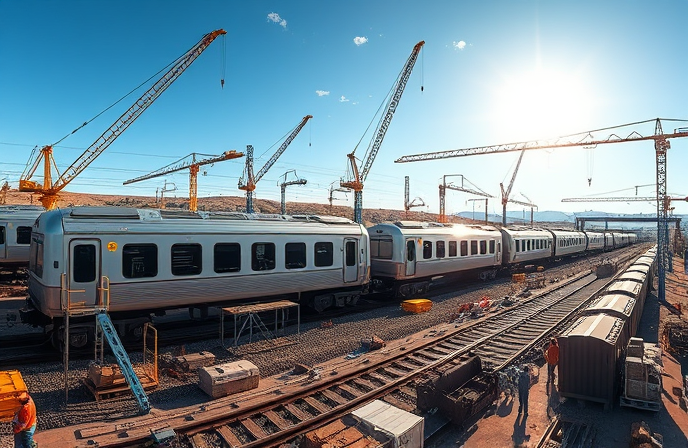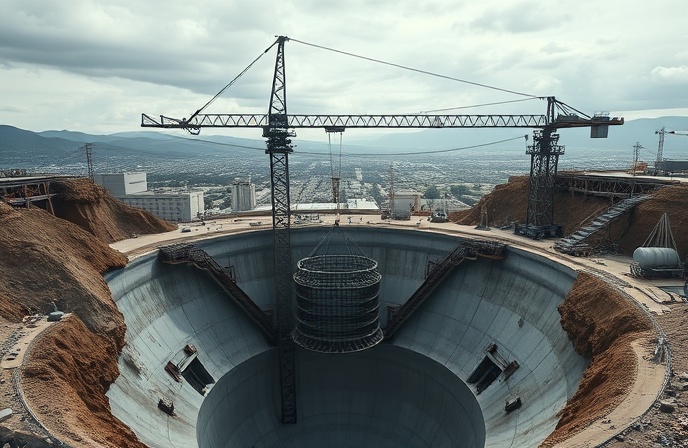Metro Tunnel: Future of Rail, CBTC, & Safety Tech Guide
Melbourne’s Metro Tunnel, opening late 2025, boosts rail capacity with advanced signalling. New technology promises improved punctuality and safety.

Melbourne’s Metro Tunnel Set to Revolutionize Rail Network with Advanced Signalling and Safety Technology
Melbourne’s public transportation network is on the cusp of a major transformation, with the much-anticipated Metro Tunnel scheduled to open by the end of 2025. This ambitious project, the largest expansion of Melbourne’s rail system since the City Loop began operations in January 1981, promises to drastically improve capacity, punctuality, and overall passenger experience. The project involves twin tunnels under the CBD, creating an end-to-end train line connecting Sunbury in the west to Cranbourne and Pakenham in the southeast, while also introducing new stations and crucial integrations with the existing network. This article will explore the cutting-edge technology at the heart of this project, focusing on the innovative signalling systems and advanced safety features that will redefine Melbourne’s railway operations.
Enhanced Capacity: High Capacity Signalling with Communications-Based Train Control (CBTC)
At the heart of the Metro Tunnel’s increased capacity lies a new High Capacity Signalling system, delivered by the Rail Network Alliance (RNA), a collaboration including Alstom, John Holland, CPB Contractors, AECOM, Metro Trains Melbourne, and the State of Victoria. The RNA is responsible for the project’s overall signalling system. This new system utilizes Alstom’s world-leading Communications-Based Train Control (CBTC) solution, known as Urbalis. CBTC, which wirelessly communicates the location of moving trains to other trains, the railway line, and signal control centers, automatically adjusts train speed to maintain a safe distance. This allows trains to run closer together than conventional signalling systems that use fixed stop and go lights, increasing frequency of service. The system has already proven its efficiency on sections of the Pakenham/Cranbourne line since January 2023, marking the first rollout of High Capacity Signalling on an existing network anywhere in Australia. Alexander Robinson, Rail Control and Project Engineering Manager of Alstom, explains that the system has already shown improvements, enabling trains to run every three minutes, with the potential for every two minutes during peak hours. The CBTC is not only increasing capacity on the Sunbury and Cranbourne/Pakenham lines, but also freeing up space within the existing City Loop, making possible increased service across the wider rail network.
A Bespoke Solution: Integrating CBTC with Existing Infrastructure
A unique aspect of the Metro Tunnel project is that it is the first mixed-mode signalling application in Australia, where Alstom has combined CBTC with mainline signalling on the same line. This required significant innovation to accommodate existing trains, including V/Line and freight services, alongside the new metro rolling stock. As a result, Alstom developed a tailored system that incorporated Victorian signalling principles from the past century into modern CBTC technology. This bespoke solution addressed the specific needs of the project, and was a complex feat of reverse-engineering and integration. Alstom leveraged its international expertise, bringing in knowledge from its Product Centre in Pittsburgh, USA, which worked in tandem with the local Melbourne team to create a localized and effective solution.
Improving Reliability: Modern Axle Counters and Operational Efficiencies
Beyond increased capacity, the Metro Tunnel project is poised to significantly improve service reliability. The integration of modern axle counters replacing older track circuits, has already improved reliability, a trend expected to continue upon the tunnel’s opening. Furthermore, the implementation of CBTC allows for a more consistent train runtime and punctuality. Even in the event of a conventional signalling system failure, the CBTC trains will continue to operate, ensuring minimal disruption for passengers. In the tunnel itself, there will be significantly reduced wayside equipment, minimizing maintenance requirements and costs. Having the majority of operational functions based on the trains themselves, reduces maintenance and, in turn, reduces closures of the rail line for maintenance work.
Elevating Safety: Platform Screen Doors (PSDs)
In addition to signalling advancements, the Metro Tunnel incorporates significant improvements in passenger safety with the implementation of Platform Screen Door (PSD) technology. These PSDs, provided by Alstom, separate passengers from moving trains, mitigating the risks associated with the train/platform interface. As a first for Melbourne, these doors have been installed in all five new underground stations and enable train and platform doors to open and close at the same time, which not only improves safety, but improves overall train punctuality. Skylar (Xin) Qi, System Integration Test Engineer at Alstom, describes the design considerations taken to further enhance safety, including the use of special door designs that prevent entrapment. Extensive testing has been carried out to ensure the effectiveness of the safety features, with safety being the primary priority.
Conclusion
The Metro Tunnel project represents a substantial investment in Melbourne’s rail infrastructure, with the promise of transforming the passenger experience through increased capacity, improved punctuality, and enhanced safety features. The innovative combination of CBTC technology, customized integrations, and advanced safety systems positions Melbourne’s rail network at the forefront of modern urban transport. The project’s success relies on the careful integration of existing systems with new technologies, with the potential to ease overcrowding on existing lines while providing increased capacity on new lines. The positive impact of this project will be felt across the rail industry as other cities seek ways to increase capacity without compromising safety. The Metro Tunnel project showcases the innovative use of digital infrastructure, and provides a model for public transit systems worldwide as they face increased demand and the need for improved reliability and safety. The architecture of the new stations are also poised to transform the passenger experience, providing a modern, safe, and efficient experience.





